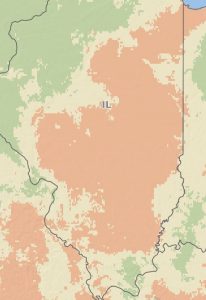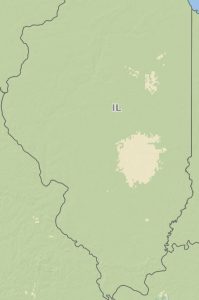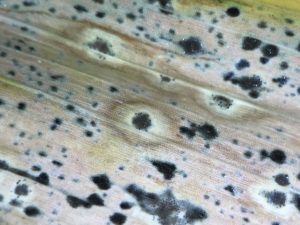Early planted wheat has started to flower in the southern part of Illinois. Although conditions have been cool, persistent rains continue to elevate levels of FHB risk in flowering, highly susceptible wheat varieties. However, the risk is negligible for moderately susceptible and moderately resistant varieties. A quick comparison of the risk maps shows why using a variety with even middling FHB resistance is a critical component for FHB management (figures below).
Suggested fungicide products for suppressing FHB and vomitoxin include Prosaro, Caramba, Miravis Ace, and Proline (if following with vegetables). Replicated research indicates all of the suggested products are most efficacious in suppressing vomitoxin when applied between FGS 10.5.1 through 5 days after 10.5.1. FGS 10.5.1 is defined as the point where 50% of the main tillers have started to flower in a field. Ensure that all label directions are being followed to ensure proper application and to ensure performance. Do not apply fungicides that contain a strobilurin (FRAC group 11) as these have been associated with enhanced levels of vomitoxin in replicated university research trials. Continue to monitor your fields and the FHB prediction center as you approach the most critical times for applying in season fungicides for FHB.
Do you know what level of FHB resistance you have in your wheat? Do you have questions about application, timing, or similar? Then visit the Scabsmart website https://www.scabsmart.org/ . This resource provides the most up to date variety ratings, best management practices, and other resources to help you combat FHB.





